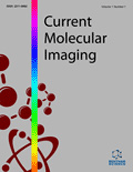Abstract
Molecular imaging of apoptosis can be applied for diagnosis and/or therapeutics in the field of oncology since it may allow rapid assessment of cancer treatment. Various imaging techniques are employed to visualize apoptotic cells in vivo to probe function of enzymatic and morphologic events occurring during cell death. In the present review, we outline recent investigation of imaging molecules targeting early apoptotic processes, such as externalization of phosphatidylserine, activation of caspases, and other apoptotic changes which can be de novo targets on the cell surface or inside of the cells. Including Annexin-A5 derivatives, which are the most successful and widely applied approaches in apoptosis imaging based on specific interaction with phophatidylserine, current researches of other phosphatidylserine indicators, caspase substrates/inhibitors, and numerous de novo imaging molecules are discussed with points of potential advantages and drawbacks. Two of them, 99mTc- or 123I-labeled annexin A5 and 18F-ML10, have progressed to clinical trials which hold great promise for specific imaging of apoptosis in several types of cancer patients for early assessment of therapy. Furthermore, new targets and accompanying new tracers such as histone H1 and ApoPep-1, respectively, and development of translatable labeling platforms will lead to a rapid expansion of apoptosis imaging allowing fast assessment of therapy efficacy in cancer.
Keywords: Apoptosis, molecular imaging of cancer therapy, phosphatidylserine, caspase-3, Annexin A5, PS indicator, aposense family, ApoPep-1, histone H1, 18F-ML10.
 38
38

